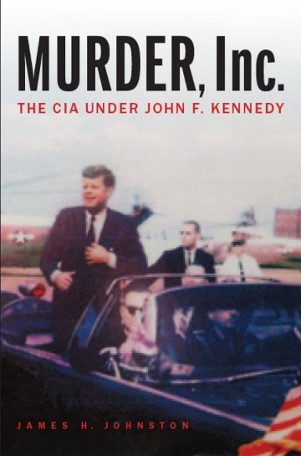Press coverage of the claims of former Secret Service agent Paul Landis is an example of how the media, well shoot the public too, forms narratives in its head and fits news items into that narrative. In this case, the so-called single bullet theory is that narrative, but it could just as easily have been the "grassy knoll theory" on any of a dozen others. The essence of Landis's claim is that he found a bullet, presumably a spent one, in the seat where Kennedy had been shot in the presidential limousine. He then placed it on the stretcher with Kennedy before he was wheeled into the hospital.
But because the narrative of Murder, Inc. is about the failures of American intelligence agencies, I fit the incident into that. The CIA was trying to kill Castro, a fact it hid from the Warren Commission. The FBI was derelict in arresting Oswald even though he had threated to blow up the FBI office in Dallas. The FBI in Dallas covered that up, and Hoover hid the fact he censured multiple FBI agents for failures.
And what about the vaunted Secret Service? It is well to remember that the agents in Kennedy's motorcade in Dallas had been up drinking until the wee hours of the morning of November 22, 1963. They had worked long into the night of November 21 and gone without food. Most went to the Press Club in Fort Worth to get something to eat, but its food service had stopped for the day. They had some drinks there and then wandered down the street to the Cellar. There are various accounts of what they did. CBS reporter Bob Schieffer was there. This is from the Dallas News. The Warren Commission took testimony and affidavits from the Secret Service about the incident. The Service attempted to gloss over the matter by saying the agents were told they could get something to eat at the Cellar. It was described as a beatnik coffee house that didn't serve alcohol. But a Google search will turn up other reports that the waitresses wore only underwear, and Schieffer said liquor was available to "friends." Landis signed an affidavit for the Warren Commission saying he had two "Salty Dicks" whatever those were.
Landis's current claim raises further questions about the Secret Service's professionalism. The Secret Service is part of the Treasury Department. In addition to executive protection, it performs law enforcement duties in cases such as counterfeiting. So in theory at least, Landis was a law enforcement officer. He was an eyewitness to murder; he found a bullet that must have been used in the crime; and, what does he do? He removes it from the scene and puts it on a stretcher for the doctors to find. He doesn't secure it. He doesn't turn it over to the police. He doesn't even tell his superiors. To make matters worse, Landis was standing on the running board of the car behind the presidential limousine and said he only heard two shots, not the three the Warren Commission said were fired. But if the bullet Landis allegedly found isn't the so-called magic bullet, there must have been four shots.
This new revelation fits much better into the narrative of widespread failure across the security agencies of the United States with respect to the assassination and a failure by the Warren Commission to get at some basic facts. I can't find any commission testimony from Landis. Imagine how different the Warren Report might have been, and how different our mental narrative of the assassination would be, if Landis had been called as a witness in 1964 and testified to finding what could only have been a fourth bullet. Of course, maybe that was not his memory then.

